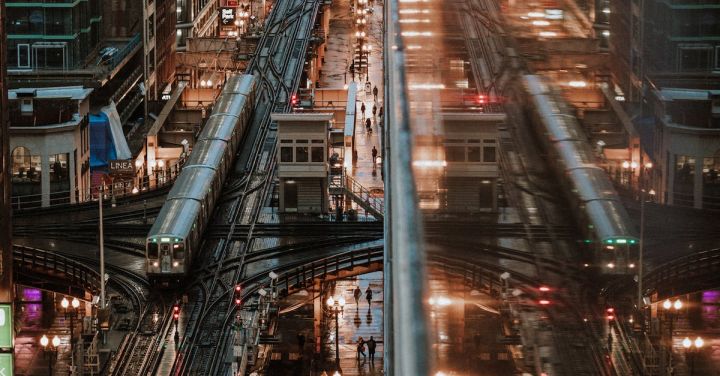The journey of railway tracks has come a long way, from humble beginnings of iron to the modern marvels of steel. These tracks, which carry trains across vast distances, have undergone significant transformations over the years, resulting in improved efficiency, safety, and durability.
In the early days of railway construction, iron tracks were the norm. These tracks were made by casting molten iron into molds, resulting in solid iron bars that were then laid end-to-end to form a track. While this method provided a basic means of transportation, it had its limitations. Iron tracks were prone to cracking and breaking under the weight of heavy locomotives, leading to frequent maintenance and repairs.
The introduction of steel revolutionized the railway industry. Steel tracks offered several advantages over their iron counterparts. Steel is a stronger and more durable material, capable of withstanding the heavy loads and constant vibrations of passing trains. This increased strength translated to less maintenance and longer lifespans for the tracks.
One of the key advantages of steel tracks is their ability to support higher speeds. With the rise of faster locomotives and the demand for quicker travel, steel tracks proved instrumental in achieving these goals. The superior strength and stability of steel allowed for smoother rides, reduced friction, and ultimately faster train speeds.
Another notable improvement with the transition from iron to steel tracks was the reduction in derailments. Derailments were a frequent occurrence on iron tracks due to the cracks and breaks that would develop over time. Steel tracks offered a more uniform and reliable surface, reducing the chances of trains veering off course.
Furthermore, the use of steel tracks enabled the implementation of more sophisticated signaling and control systems. The increased strength and stability of steel tracks allowed for precise alignment, ensuring that trains stayed on track and followed the designated routes. This, in turn, enhanced safety and reduced the risk of collisions or accidents.
The production process for steel tracks involves a series of intricate steps. It begins with the selection of high-quality steel, which is then heated and shaped into long sections known as rails. These rails are carefully inspected for any imperfections before being laid and secured onto the track bed. The installation process requires precision and expertise to ensure proper alignment and smooth transitions between sections.
In recent years, advancements in technology have further improved the design and construction of steel tracks. New materials and manufacturing techniques have led to tracks that are even stronger, more resistant to wear and tear, and capable of supporting higher speeds. Additionally, innovations such as continuous welded rail have eliminated the need for joints between rail sections, resulting in a smoother and quieter ride for passengers.
The journey of railway tracks from iron to steel has been a remarkable one. The transition has brought about significant improvements in efficiency, safety, and comfort. Steel tracks have proven to be the backbone of modern railway systems, enabling faster travel, reducing maintenance costs, and providing a reliable means of transportation for millions of people around the world. As technology continues to advance, we can only anticipate further enhancements in the future of railway tracks.
